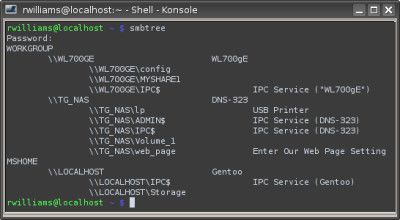From our front-page news:
Early last month, there was a slow news day, and as a result, I had to scrape the bottom of the bucket to find something to post about. Of course, the natural thing to do was pimp our old content, which I think is a great idea since there are many people who may not have seen it before, and well, even if you did see it before, you might appreciate the reminder. The last 'article recall' I did covered a Linux article, and well, let's stick with the Linux theme for this one. Don't worry, I plan to recall non-Linux content in the future as well.
If you run Linux, do you know what backup options are available to you? There's honestly quite a few solutions out there, and I admit that I haven't tested any, so the suggestions I have might be more difficult than what is available. In "Backing Up Your Linux", I give the power-users solution of how to back up your rig, because when you take care and write a simple, yet effective script, you know that your system is being handled and backed up properly.
The article covers many different ways to exploit 'rsync', and in case you don't have your system set up in a certain way, I make sure to cover all the details. Though you can back up to another hard drive or even an external hard drive quite simply, the article also explains how to backup to network storage (NAS box or even a Windows PC) and even backing up to a remote server, where your data will remain safe even if something horrible happens to your local backups. So if you run Linux and have enough patience to read through the article and write up some great scripts, I highly recommend you read through, and I'm not just saying that because I wrote it. I swear.

There are many different mediums that you can back up to, but we are going to take a look at the three most popular and go through the entire setup process of each: 1) Backing up to external storage; 2) Backing up to a Network-Attached-Storage (NAS) and 3) Backing up to a remote server running Linux. On this first page, we are going to delve into the wonderful tool that is rsync, and give examples for you to edit and test out for yourself.
Source: Backing Up Your Linux
If you run Linux, do you know what backup options are available to you? There's honestly quite a few solutions out there, and I admit that I haven't tested any, so the suggestions I have might be more difficult than what is available. In "Backing Up Your Linux", I give the power-users solution of how to back up your rig, because when you take care and write a simple, yet effective script, you know that your system is being handled and backed up properly.
The article covers many different ways to exploit 'rsync', and in case you don't have your system set up in a certain way, I make sure to cover all the details. Though you can back up to another hard drive or even an external hard drive quite simply, the article also explains how to backup to network storage (NAS box or even a Windows PC) and even backing up to a remote server, where your data will remain safe even if something horrible happens to your local backups. So if you run Linux and have enough patience to read through the article and write up some great scripts, I highly recommend you read through, and I'm not just saying that because I wrote it. I swear.

There are many different mediums that you can back up to, but we are going to take a look at the three most popular and go through the entire setup process of each: 1) Backing up to external storage; 2) Backing up to a Network-Attached-Storage (NAS) and 3) Backing up to a remote server running Linux. On this first page, we are going to delve into the wonderful tool that is rsync, and give examples for you to edit and test out for yourself.
Source: Backing Up Your Linux
